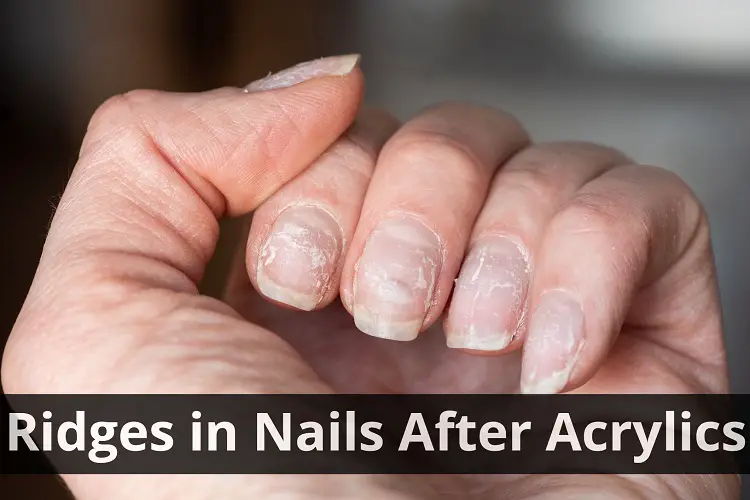When people refer to nails, it’s usually a statement that refers to the favorite color or design that people can wait to try at salons. While nails are prone to breaking, the average person’s nail health often takes a back seat compared to other similar issues.
The deduction behind this concept is that nail health isn’t appealing, and people easily forget that the hands speak volumes about your care routine and general health.
However, one common aspect that most people often consider is a reference to the appearance of the nails.
When you notice your nails aren’t as smooth as before, it could be that you have ridges in your nails after acrylics issues. Fortunately, this guide will be looking at a few helpful solutions for this problem:
What is Nail Ridge?
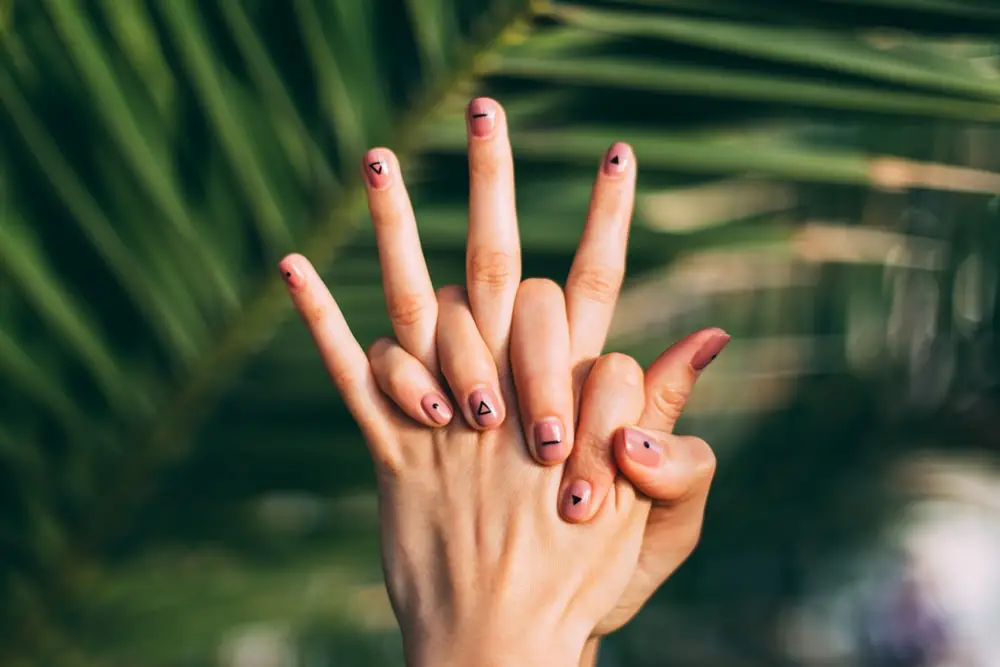
As the term suggests, a nail ridge is a physical depression that forms in the nail. Usually, the ridge forms up into a valley that sometimes has a bumpy or uneven feel. Fortunately, nail ridges don’t often lead to pain or discomfort for users.
So, what is the leading cause of nail ridges?
There are various causes of nail ridges, with the most common “MISCONCEPTION” being that it’s often due to calcium deposits. However, nail ridges are mostly a natural occurrence, just like wrinkles in the skin.
Therefore, the result is that nails are often the result of aging issues. A typical example would be the longitudinal ridges, the runs you might have come across from the cuticle to the tip of the nail.
The other common cause of the horizontal ridges in nails in fingernails could be genetic predisposition factors. Brittle nails are prone to ridging as people age, significantly as issues such as circulation to the extremities decrease.
The lack of nutrient-rich oxygen blood causes the nails to become frail over time. In some rare instances, the ridge could signify a much more severe health complication. The other less likely causes of the ridges are the health issues such as arthritis and anaemia.
It can also be due to other systemic health complications that accompany nail complications, such as the discoloration of nail beds.
Or, have you ever come across the brown lines on nails after acrylics? The common cause of this issue is splinter haemorrhages, which occur due to blood clots in the small blood vessels underneath the nails.
Fortunately, we have identified the common cause of such issues and the tips for how to get rid of ridges from acrylic nails.
How to Heal Damaged Nails After Acrylics?
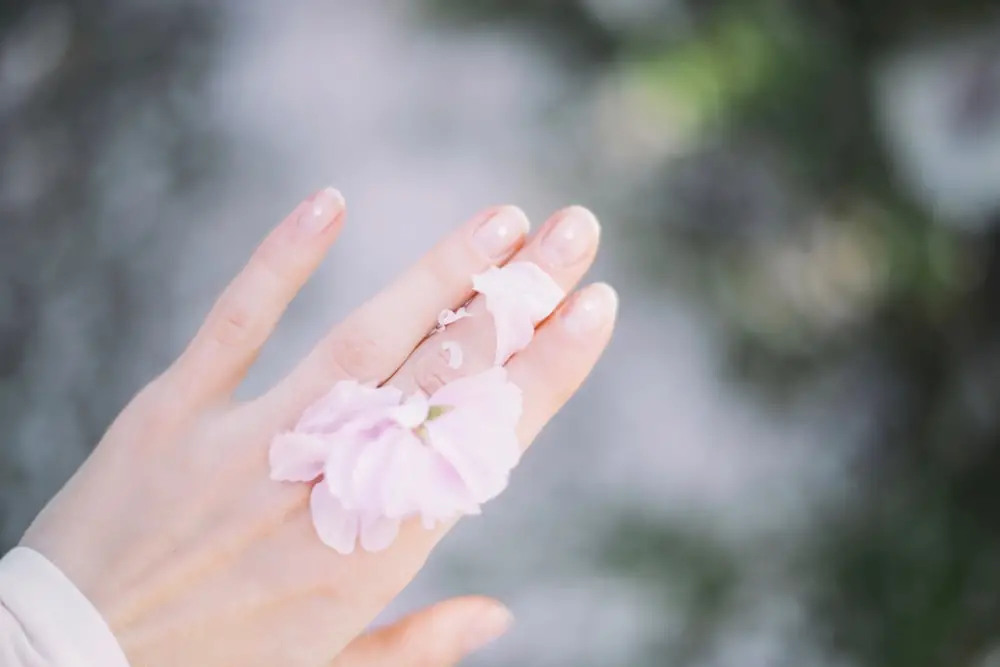
There are various things that you can do about fingernail ridges, with the most common types being:
Tip #1. Ensure you Moisturize Your Nails Regularly
One of the common causes of ridges in nails after acrylics is failing to use the proper moisturizing process.
The reason is that acrylics cause wear and tear to the structure of the nails over time. It can also scarp off the natural oils that exist on the nails.
The best way to solve this problem is to ensure you hydrate the nails with some oil or hand lotion.
If possible, get a nail moisturizer or some biotin oil to help improve the structure of the nails. Any brittle nails will require lots of moisturizers before you can achieve the best results.
Recommended Product: Hard As Hoof Nail Strengthening Cream with Coconut Scent
Tip #2. Maintain Nail Hygiene
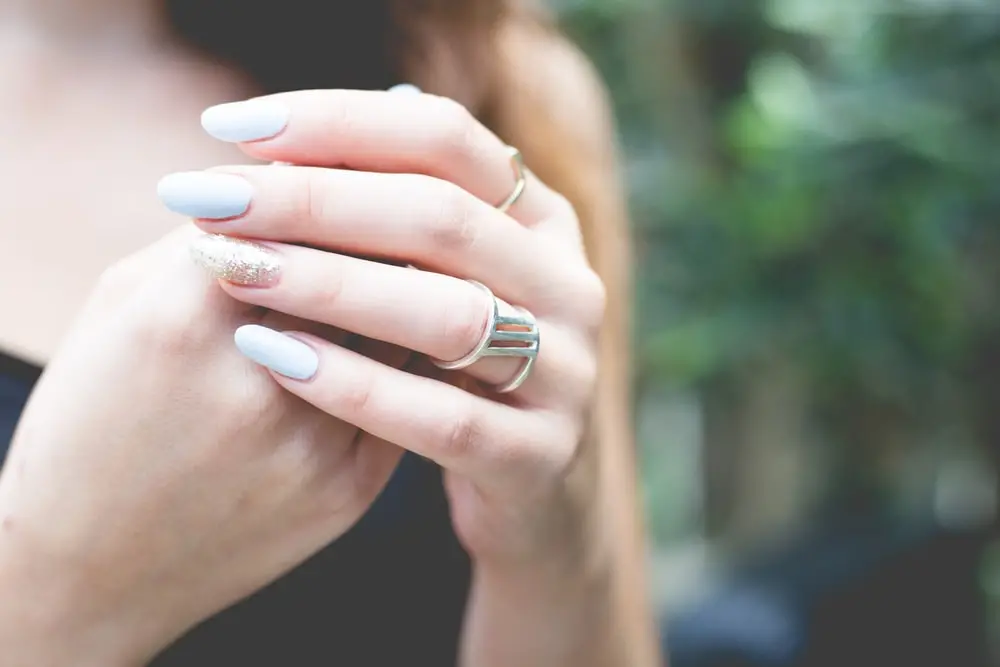
One of the other surprising but effective ways of preventing nail ridges after acrylics involves maintaining optimal nail hygiene. However, you also have to avoid going overboard with procedures such as trimming.
The reason is that excessive trimming of the nails makes them prone to developing ridges. You also have to use the right clippers, only when the nail grows and there is a visible white section.
It gives your nail sufficient time to grow and heal between the clippings you make to the nails. You also have to trim your nails, which are usually straight across, then around the tips in a gentle curve format.
You can use a glass file nail for this process because it prevents issues such as trauma with great effect.
Recommended Product: Cuccio Pro Antibacterial Nail Cleansing Spray
Tip #3. Never Pick or Bite Your Nails
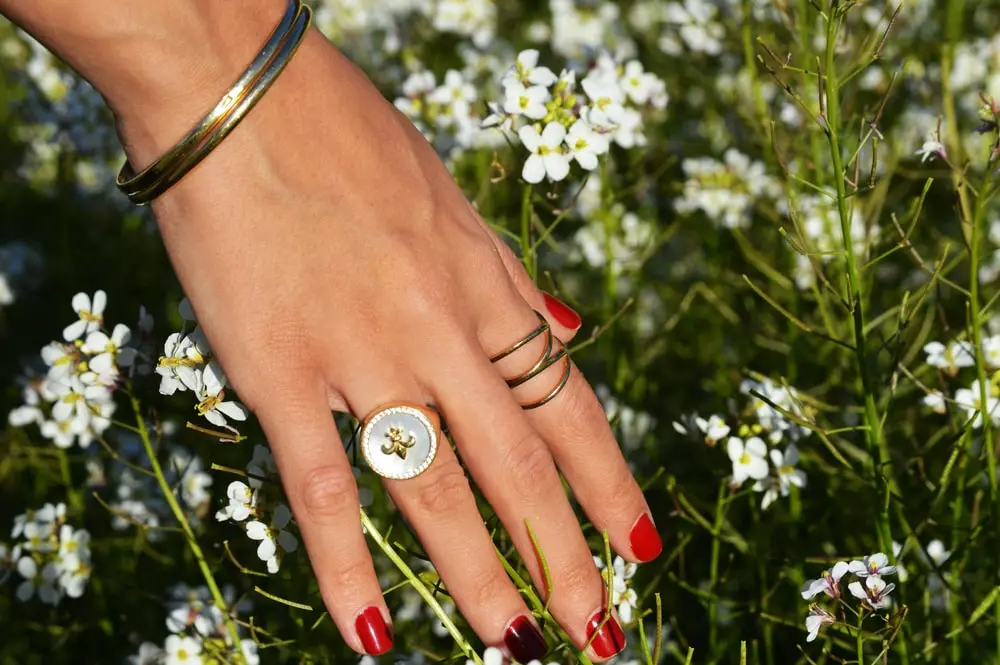
The organs in your body, including the nails, tend to be sensitive to stimuli. Therefore, consider stopping the picking or biting habit to help decrease the likelihood you will experience a dent in your nail from acrylics.
.
A common symptom of people picking and biting the nails face is the vertical nail ridges that split.
Identifying the factors that cause you to pick and bite your nails can be crucial in addressing the ridges issue. It ensures your nails can develop without any trauma and that you can maintain optimal nail health.
Tip #4. Buff the Nails Gently
Even though it won’t address the underlying cause, using the correct buffing technique can determine whether your nails will develop ridges.
However, you must be careful when using nail buffers because this can cause damage to the nail plate.
Eventually, the nails will become softer, flexible, and prone to trauma complications. One or two buffs of the nail should be sufficient each month. The other important suggestion for buffing your nails is to ensure you do it in the direction of the nails.
Recommended Product: 4 Way Shiny Block / 4 Step Buffing Block Shine Nail Buffer
Tip #5. Avoid Damaging the Cuticle

The cuticle is one of the most critical aspects of your nail’s health and stability. The only barrier helps ensure the finger is safe from infections and general structural damage.
An infection can easily damage the nail matrix, which can cause long-term deformities, including ridges. However, failing to use the correct force to push back the cuticles can easily lead to trauma and unsettle the nail bed.
Tip #6. Avoid Overexposure to Water or Moist Conditions
The nails can soften easily when exposed to moist conditions, such as salt water, or when using gloves for extensive durations. The issue can be particularly significant when you have weak nails or nail beds.
Exposing your fingers to such conditions makes you prone to dryness, eczema, and other nail health issues. When exposing your hands to these moist conditions, ensure you use products such as nail strengtheners for the best results.
Having your hands constantly immersed in water makes your fingers prone to structural damage over time.
Recommended Product: Nail-Aid Keratin 3-Day Growth Nail Treatment & Strengthener
Tip #7. Maintain a Healthy Diet

Source: Unsplash.
Even though it’s rare, ridging is sometimes a common sign of health complications in the body. Consuming a healthy diet and staying hydrated can go a long way in ensuring everyone has the daily nutrient quota for healthy nails.
Specifically, nutrients such as calcium, vitamins, and protein are essential for the development of nails.
It’s also common knowledge that the vertical ridges on nails are because of a vitamin deficiency. However, this doesn’t mean that you focus on a specific food category for nail health purposes.
Instead, you should consume a well-balanced diet that supports all other body functions. The reason is that all body functions complement each other, including the systems that help replenish your nails.
Frequently Asked Questions (FAQ)
How Do You Fix Nail Ridges after Acrylics?
There are various ways of fixing acrylics after ridges. The first technique involves moisturizing the nails, using a disinfectant, and sanding sufficiently. You may also have to let the nails sit for a few minutes before the next product application.
How Long Does It Take for Nails to Recover after Acrylics?
On average, it takes two to eight weeks for the nails to recover after acrylics. Factors such as your nail care regimen and the processes and techniques you use are crucial for achieving results.
How Long Does It Take for Nail Ridges to Go Away?
The cause of the nail ridges has a considerable role to play in whether nail ridges will go away. On average, nail ridges disappear after a few weeks or months. However, the natural ridges often stay for a lifetime and don’t usually have a significant health compromise.
Can Ridges in Nails Be Corrected?
Yes, some nail ridge issues are possible to correct. Usually, nail care professionals recommend that you buff the nails gently to remove the ridges and use some moisturizing products on the nails.
Can Fake Nails Cause Ridges?
Yes, fake nails can cause ridges because they can lead to structural damage on the nail bed. You must use the right nail care product if you are a regular user of nail products such as gel or dip nails.
There are various causes of ridges in nails after acrylics, and it’s crucial that you be careful to avoid such issues. However, there are some ridges which occur naturally and should not cause concern.
- Crochet Braid Hair Cost: Hope for a Style to Slay!! - January 9, 2024
- Best Braid Pattern For Crochet: Hair-Styling Tips And Tricks - January 3, 2024
- How To Braid Hair For Crochet: Best Hair-Styling Tips! - December 26, 2023

